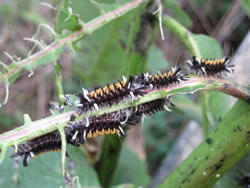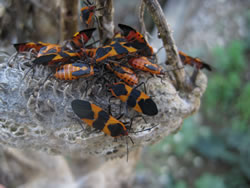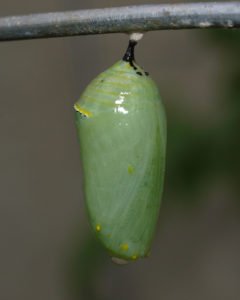Milkweeds are perennial plants growing each spring from rootstock and seeds rather than seeds alone. Habitat destruction has reduced their range and numbers. Monarch butterfly larvae appear to feed exclusively on milkweeds.
There are approximately 110 species of milkweed in North America known for their milky sap. Most species are toxic to vertebrate herbivores if ingested. When Monarch larvae ingest milkweed, they ingest the plants’ toxins and sequester these compounds in their wings and exoskeletons, making the larvae and adults toxic to many potential predators. There is considerable variation in the amount of toxins in different species of plants.
Milkweeds have floral whorls of sepals (the calyx) and petals (the corolla). Their lowers are interesting since they have a third whorl of five hoods each enclosing a horn (modified filaments of the anthers). Together, hoods and horns are referred to as the corona. Horns of some species are long, while horns of others are reduced such that they cannot be seen.
Milkweeds rely on butterflies, moths, bees, ants, and wasps for pollination.



The Tussock Moth Caterpillar and the Milkweed Bug
Monarch Caterpillar and Chrysalis


